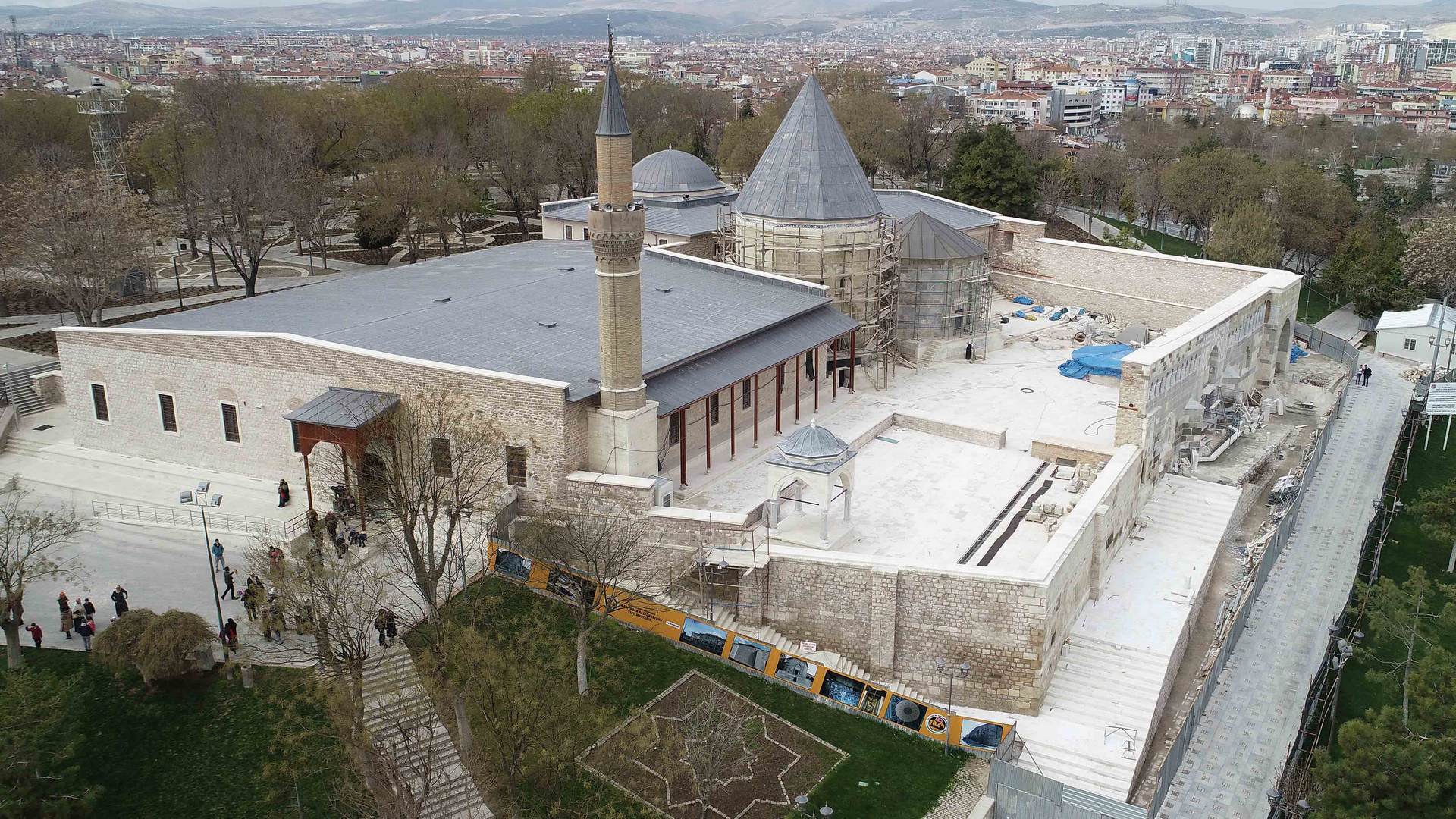Description
Property Name: Alaeddin Mosque
Inventory No: 90-332-3
Date of infill of the inventory form: 2009-10-23
Country (State party): Turkey
Province : Konya
Town:
Geographic coordinates: 37° 52′ 24.09″ N
32° 29′ 33.87″ E
Historic Period: 13th century, 1st half
Year of Construction: 1150 – 1220
Style: Seljuk
Original Use: Madrasa, Mosque
Current Use: Mosque
Architect: Unknown
Significance
Alaeddin Mosque built on the hill with the same name –Alaeddin Hill- is the oldest and largest mosque building in Konya. However, this Seljuk period monument is the most problematic one in Konya and it is obvious that the mosque does not have a regular plan. The western part is more irregular compared to the eastern part. The monument is known to be completed in about seventy years, which means that there have been different periods during the construction process. The construction started during the reign of the Sultan Rukneddin Mesud I(116-1156) and completed during Alaeddin Keykubad I reign. The mosque complex is a significant one as being a fragment of the hill which formed the Konya citadel. With the permission of İzzeddin Keykavus, Sultan of Anatolia Seljuk Empire between 1211 and 1220, all the Seljuk sultans were buried here. The inscriptions on the courtyard walls mention about four Seljuk Sultans: Sultan I. Mesud, II. Kılıçaslan, I. İzzettin Keykavus and I. Alaeddin Keykubad. The reason why the mosque is named as ‘Alaeddin’ is that Alaeddin Keykubad completed most of the mosque building, during his reign.
Selection Criteria
iii. to bear a unique or at least exceptional testimony to a cultural tradition or to a civilization which is living or which has disappeared
vi. to be directly or tangibly associated with events or living traditions, with ideas, or with beliefs, with artistic and literary works of outstanding universal significance
State of Preservation
The mosque is a well preserved monument in Konya; however the traces in the prayer space, composing of two parts, indicate the repairs that took place in two different periods. There have been some interventions such as column addition in the western part. Again, the irregular situation of the piers is the indicator of some other interventions of some times. Presently the mosque is still functioning as its original purpose.
References


